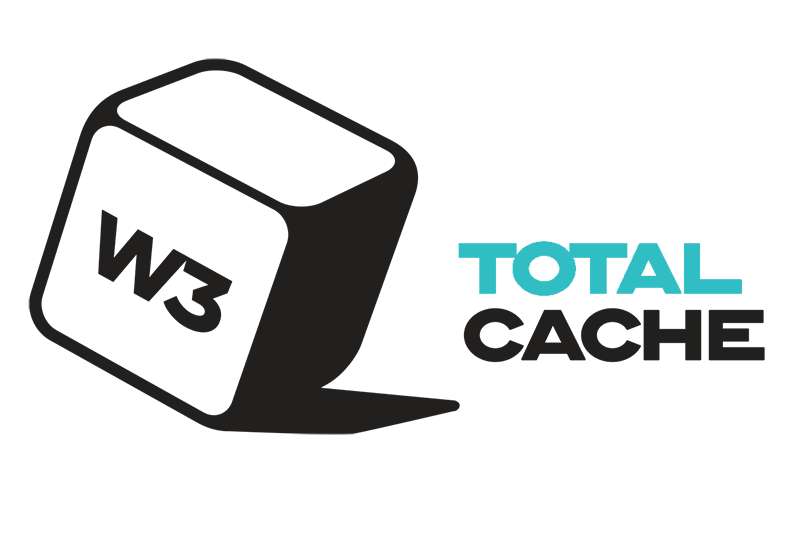In the relentless pursuit of website speed, caching is the single most effective tool in a WordPress administrator’s arsenal. A well-configured caching strategy can dramatically reduce server load, slash page load times, and significantly improve user experience and SEO rankings. However, the WordPress ecosystem is saturated with caching plugins, each claiming to be the ultimate solution. This creates a landscape of confusion where choosing the right tool can feel overwhelming.
This article provides a definitive, in-depth comparison of the most popular and effective WordPress caching plugins available in 2025. We will move beyond surface-level feature lists to deconstruct the core philosophies and architectures of leading solutions like WP Rocket, LiteSpeed Cache, W3 Total Cache, and WP Super Cache. We will also clarify the role of optimization plugins like Autoptimize and how they fit into a comprehensive performance strategy. By understanding the fundamental differences in their approach—from user-friendliness and server-level integration to granular control—you can make an informed, strategic decision that aligns with your technical expertise, hosting environment, and specific performance goals.
Caching Fundamentals: Understanding the Core Concepts
Before comparing plugins, it’s crucial to understand what caching is and the different forms it takes. Caching is the process of storing temporary copies of files or data in a high-speed storage layer (the “cache”) so that future requests for that data can be served more quickly. In the context of WordPress, this avoids the resource-intensive process of dynamically building a page for every single visitor.
Page Caching vs. Browser Caching
- Page Caching: This is the primary function of most caching plugins. When a visitor requests a page, WordPress normally has to execute PHP code, query the database, and assemble an HTML file on the fly. Page caching creates a static HTML version of that page and saves it. The next visitor who requests that same page is served the pre-built static file instantly, bypassing the entire PHP and database workload. This dramatically reduces server response time (Time to First Byte or TTFB) and improves scalability.
- Browser Caching: This type of caching happens on the user’s own computer. A caching plugin can instruct the user’s web browser to store static files—such as your logo, CSS stylesheets, and JavaScript files—locally. When the user navigates to another page on your site, their browser can load these assets from its local cache instead of re-downloading them from your server. This significantly speeds up page loads for repeat visitors and subsequent page views.
Server-Level vs. Application-Level Caching
This is a critical architectural distinction that has a profound impact on performance.
- Application-Level Caching (Plugin-Based): This is how most caching plugins operate. An incoming request hits the web server (e.g., Nginx or Apache), which then loads the WordPress PHP application. The plugin then takes over, serving a cached file. While much faster than no cache, it still involves the overhead of loading WordPress itself.
- Server-Level Caching: This is a fundamentally faster approach where the web server itself handles the caching. The request is intercepted by the server, which serves the cached file directly without ever invoking WordPress or PHP. This method, used by hosts with LiteSpeed or Nginx FastCGI cache configurations, offers the highest level of performance and can handle a much greater volume of traffic.
With these fundamentals in mind, let’s analyze the leading players in the WordPress caching space.
The Contenders: A Detailed Plugin Breakdown

1. WP Rocket: The Premium All-in-One Powerhouse
Philosophy: WP Rocket is built on the principle of maximum impact with minimum configuration. It is a premium-only plugin designed for users who want powerful results without needing to navigate a labyrinth of complex settings. It is widely regarded as the most user-friendly and comprehensive caching solution on the market.
Key Features:
- Effortless Setup: Upon activation, WP Rocket automatically applies about 80% of web performance best practices, including page caching, browser caching, and GZIP compression.
- Comprehensive Optimization Suite: It goes far beyond simple page caching, offering a full suite of front-end optimization tools, including CSS and JavaScript minification and combination, deferred loading of JavaScript, and lazy loading for images and videos.
- Database Optimization: Includes a dedicated tool for cleaning and optimizing the WordPress database by removing old post revisions, transients, and spam comments.
- Excellent Compatibility: It is engineered to work seamlessly with most themes, plugins, and hosting environments, making it a reliable choice for nearly any WordPress site.
- Dedicated E-commerce Caching: Automatically detects WooCommerce and other e-commerce plugins and excludes cart and checkout pages from the cache to prevent issues.
Pricing: Premium only, starting at $59/year for a single site.
Best For: Business owners, agencies, and non-technical users who are willing to pay a premium for a powerful, reliable, and easy-to-use solution that “just works” out of the box.

2. LiteSpeed Cache: The Server-Level Speed Demon
Philosophy: LiteSpeed Cache is designed to achieve the absolute highest level of performance by creating a deep, symbiotic integration between the plugin and the web server. Its most powerful features are exclusively available when a site is hosted on a server running LiteSpeed or OpenLiteSpeed web server software.
Key Features:
- Server-Level Full Page Cache: This is its killer feature. When used on a LiteSpeed server, the plugin communicates directly with the server’s built-in caching engine (LSCache) to deliver static content at blistering speeds, completely bypassing the PHP backend.
- Advanced Dynamic Caching (ESI): For dynamic sites like WooCommerce, it supports Edge Side Includes (ESI), a technology that allows for “hole punching.” This means it can serve a page mostly from cache while leaving specific dynamic sections (like a shopping cart widget) to be loaded separately.
- Free, Full-Featured Optimization: Even for users not on a LiteSpeed server, the plugin offers a robust suite of optimization features for free, including image optimization (via its QUIC.cloud service), CSS/JS minification, and database optimization.
- QUIC.cloud CDN: Offers a tightly integrated, free-tier CDN service that provides not only asset caching but also critical security features like DDoS protection.
Pricing: The plugin itself is free. The most advanced features require a LiteSpeed server, and the associated QUIC.cloud services have generous free tiers with paid plans for high-traffic sites.
Best For: Users whose websites are hosted on a LiteSpeed server. For these users, LiteSpeed Cache is unequivocally the fastest and most powerful caching solution available, often outperforming all other options.

3. W3 Total Cache (W3TC): The Granular Toolkit for Experts
Philosophy: W3 Total Cache is built for developers and technical users who demand granular control over every aspect of their site’s caching policy. It is one of the oldest and most feature-rich free caching plugins, but its power comes with a steep learning curve.
Key Features:
- Multiple Caching Methods: It offers a vast array of caching options, allowing users to choose where to store the cache (disk, Redis, Memcached), providing flexibility for advanced server setups.
- Extensive Settings: The plugin features over 16 pages of settings, giving experts precise control over page caching, object caching, database caching, and browser caching policies.
- CDN Integration: Supports virtually any Content Delivery Network.
- AMP and SSL Support: Includes specific settings to ensure compatibility with Accelerated Mobile Pages and SSL certificates.
Pricing: Free, with a premium version that adds features like fragment caching and more advanced CDN support.
Best For: Experienced developers and system administrators who understand the technical nuances of caching and want to fine-tune every possible setting for a highly customized server environment. It is generally not recommended for beginners, as a misconfiguration can easily break a site.

4. WP Super Cache: The Simple and Solid Free Option
Philosophy: Developed by Automattic, the company behind WordPress.com, WP Super Cache embodies the WordPress philosophy of simplicity and reliability. It focuses on doing one thing—page caching—and doing it well, without overwhelming the user with options.
Key Features:
- Three Caching Modes:
- Simple Mode (Recommended): The easiest to set up, it uses PHP to serve cached files.
- Expert Mode: The fastest mode, it bypasses PHP entirely by modifying the server’s
.htaccessfile to serve static HTML files directly. This requires themod_rewritemodule and can be more difficult to configure. - WP-Cache Caching: A hybrid mode used for known users and custom caching scenarios.
- Minimal Configuration: The settings page is straightforward and easy to understand, making it accessible to beginners.
- CDN Support: Includes basic integration for using a Content Delivery Network.
Pricing: Completely free.
Best For: Beginners, bloggers, and owners of smaller sites who need a simple, free, and reliable caching solution without the complexity of W3 Total Cache or the cost of WP Rocket.
The Role of Autoptimize
It’s important to clarify that Autoptimize is not a caching plugin. Its primary function is front-end asset optimization. It excels at minifying, aggregating, and deferring CSS and JavaScript files. While many caching plugins (like WP Rocket and LiteSpeed Cache) have these features built-in, Autoptimize is often used alongside a caching plugin like WP Super Cache that lacks robust asset optimization tools. It can be a powerful addition to a performance toolkit, but it does not perform page caching itself.
Feature Comparison Matrix
| Feature | WP Rocket | LiteSpeed Cache | W3 Total Cache | WP Super Cache |
|---|---|---|---|---|
| Ease of Use | ★★★★★ (Excellent) | ★★★★☆ (Very Good) | ★★☆☆☆ (Complex) | ★★★★☆ (Very Good) |
| Page Caching | Yes (PHP-based) | Yes (Server-Level on LiteSpeed) | Yes (Multiple Methods) | Yes (PHP & .htaccess) |
| Browser Caching | Yes | Yes | Yes | Yes |
| GZIP Compression | Yes | Yes | Yes | Yes |
| HTML/CSS/JS Minification | Yes | Yes | Yes | No (Requires Autoptimize) |
| Database Optimization | Yes | Yes | Yes | No |
| Lazy Loading (Images/Videos) | Yes | Yes | Yes (Pro) | No |
| CDN Integration | Yes (Any CDN + RocketCDN) | Yes (Any CDN + QUIC.cloud) | Yes (Extensive) | Yes (Basic) |
| E-commerce Caching | Yes (Automatic) | Yes (Advanced with ESI) | Yes | Yes |
| Pricing | Premium ($59+) | Free | Freemium | Free |
| Best For | All-in-one simplicity & power | LiteSpeed server environments | Developers needing granular control | Simple, free, reliable caching |
Conclusion: Choosing the Right Tool for the Job
There is no single “best” caching plugin for every WordPress site. The optimal choice depends entirely on your specific context: your technical comfort level, your budget, and, most importantly, your hosting environment.
- If you are on a LiteSpeed server: The choice is clear. LiteSpeed Cache will provide a level of performance that no other plugin can match due to its deep server-level integration.
- If you value ease of use and want a powerful all-in-one solution: WP Rocket is the undisputed champion. Its premium price is a worthwhile investment for the time it saves and the comprehensive, reliable results it delivers.
- If you are a developer or an advanced user who wants absolute control: W3 Total Cache offers an unparalleled level of customization, but be prepared to invest significant time in configuration and testing.
- If you need a free, simple, and effective solution for a basic site: WP Super Cache is a solid, no-frills choice from the creators of WordPress itself. Pair it with Autoptimize to handle front-end optimization.
Ultimately, caching is a foundational pillar of a high-performance WordPress site. By understanding the architectural differences between these leading plugins, you can move beyond the marketing hype and select the solution that will best serve as the engine for your digital presence.




